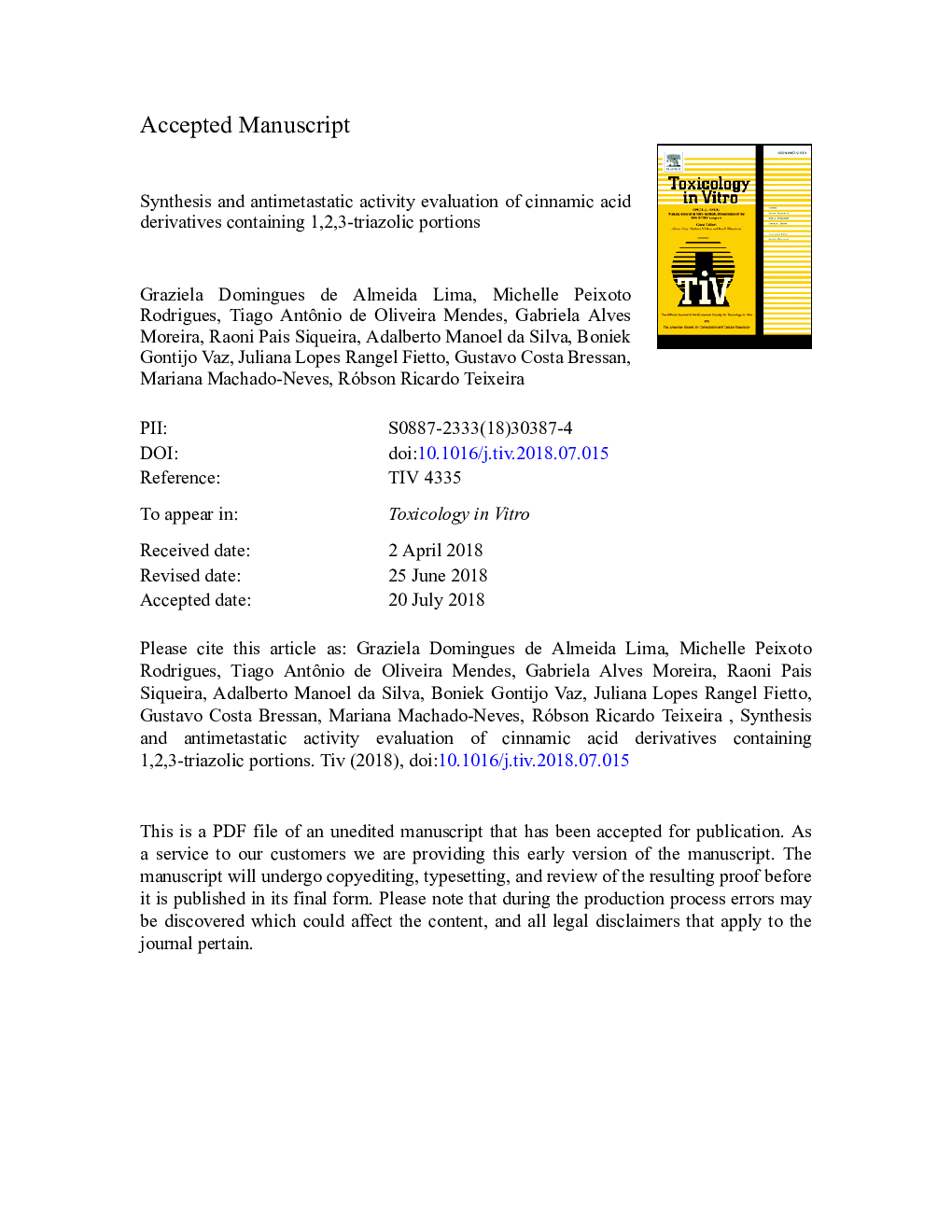| Article ID | Journal | Published Year | Pages | File Type |
|---|---|---|---|---|
| 8553668 | Toxicology in Vitro | 2018 | 36 Pages |
Abstract
It is herein described the preparation and evaluation of antimetastatic activity of twenty-six cinnamic acid derivatives containing 1,2,3-triazolic portions. The compounds were prepared using as the key step the Copper(I)-catalyzed azide (A)-alkyne (A) cycloaddition (C) (CuAAC reaction), also known as click reaction, between alkynylated cinnamic acid derivatives and different benzyl azides. The reactions were carried in CH2Cl2/H2O (1:1â¯v/v) at room temperature, and the triazole derivatives were obtained in yields ranging from 73%99%. Reaction times varied from 5 to 40â¯min. The identity of the synthesized compounds was confirmed by IR and NMR (1H and 13C) spectroscopic techniques. They were then submitted to in vitro bioassays to investigate how they act over metastatic behavior of murine melanoma. The most potent compound, namely 3-(1-benzyl-1H-1,2,3-triazol-4-yl)propyl cinnamate (9a), showed significant antimetastatic and antiproliferative activities against B16-F10 cells. In addition, gelatin zymography and molecular docking analyses pointed to the fact that this compound has potential to interact with matrix metalloproteinase 9 (MMP-9) and MMP-2, which are directly involved in melanoma progression. Therefore, these findings suggest that cinnamic acid derivatives containing 1,2,3-triazolic portions may have potential for development of novel candidates for controlling malignant metastatic melanoma.
Keywords
Related Topics
Life Sciences
Environmental Science
Health, Toxicology and Mutagenesis
Authors
Graziela Domingues de Almeida Lima, Michelle Peixoto Rodrigues, Tiago Antônio de Oliveira Mendes, Gabriela Alves Moreira, Raoni Pais Siqueira, Adalberto Manoel da Silva, Boniek Gontijo Vaz, Juliana Lopes Rangel Fietto, Gustavo Costa Bressan,
